Artists
How Destiny United Christo And Jeanne-Claude to Defy the Impossible andWrap the World
A collaborative relationship—and a division of tasks according to their respective strengths—made each of their larger-than-life artworks manageable.
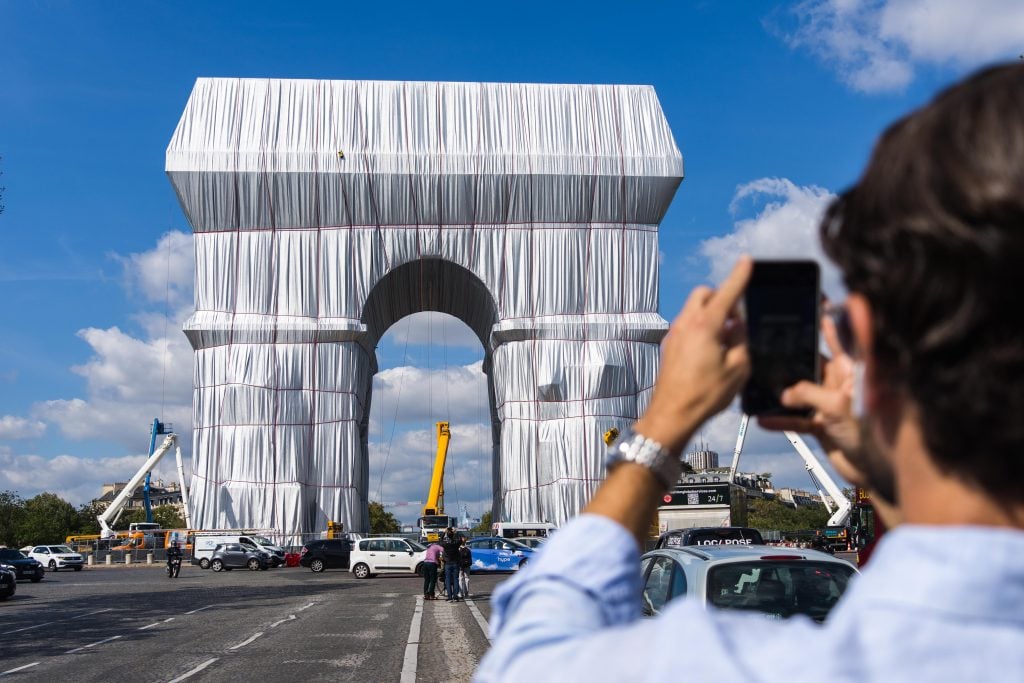
The husband-and-wife artists Christo and Jeanne-Claude brought us the silvery, ephemeral-wrapped Arc de Triomphe, the golden-wrapped Pont Neuf bridge in Paris, islands surrounded by floating pink fabric in Miami, and a suspended river of saffron flags in New York’s Central Park, to name just a few of their mammoth artworks. Each project was an exercise in unflinchingly defying the impossible, and the two became legendary icons of contemporary art history.
Yet if logic and armies of bureaucratic, conservative thinkers—not to mention opponents across political spectrums—had it their way, these and so many other works would never have seen the light of day. “We don’t just wrap things,” Christo once told me in an interview for Artnet News, not long before he died in 2020. “We wrap something profound.”
While both artists individually did their part to buck those incredible odds—several films have documented their dramatic scramble to secure permission and convince an often hostile public—it was their collaborative relationship and intuitive division of tasks according to their respective strengths that made each piece possible. The couple had a staunch and shared dedication to their work, even in the face of opposition.
“They were breathing and living [their art],” said Vladimir Yavachev, over the phone. Yavachev is Christo’s nephew and a board member of the artists’ foundation who worked with the duo for 34 years. “There was nothing else really that was important to them, other than creating and completing the project. This was their life,” he added.
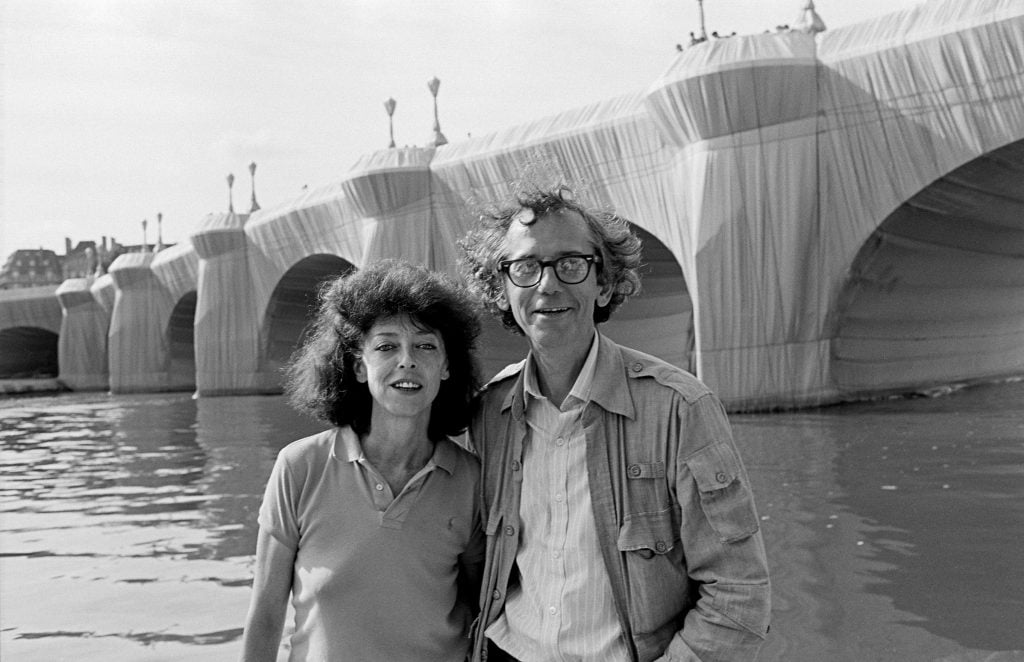
Christo and Jeanne-Claude at The Pont Neuf Wrapped Paris, 1985. Photo: Wolfgang Volz © 1985 Christo and Jeanne-Claude Foundation
The Bulgarian artist, Christo Vladimirov Javacheff (b. 1935) met Jeanne-Claude Denat de Guillebon (1935–2009) in Paris in the late 1950s, when he was a stateless, “penniless” refugee, and painted portraits of her wealthy family and other aristocrats to get by. She soon abandoned her moneyed upbringing for the artist’s life, and the two had a son named Cyril as they began their artistic collaboration in the 1960s.
Jeanne-Claude would become instrumental in helping realize the more ambitious projects outside the gallery and studio space, earning a reputation as a master persuader, who could secure loans for millions of dollars from banks needed to pay workers for their projects. However, the duo did not sign projects together until 1994. Jeanne-Claude used to say it was hard enough to have “one immigrant artist to be accepted, forget it if there are two,” remembers Yavachev.
I still recall how Christo spoke of Jeanne-Claude’s positive, undeterred spirit, regularly peppering our interview with the phrase, “Jeanne-Claude was always saying…”
“I am very incapable to negotiate,” Christo said during that talk. “She was an incredibly powerful person. Each time, today, when I have problems, I ask [my nephews] Lorenzo, Vladimir … ‘What [would] Jeanne-Claude say now?”
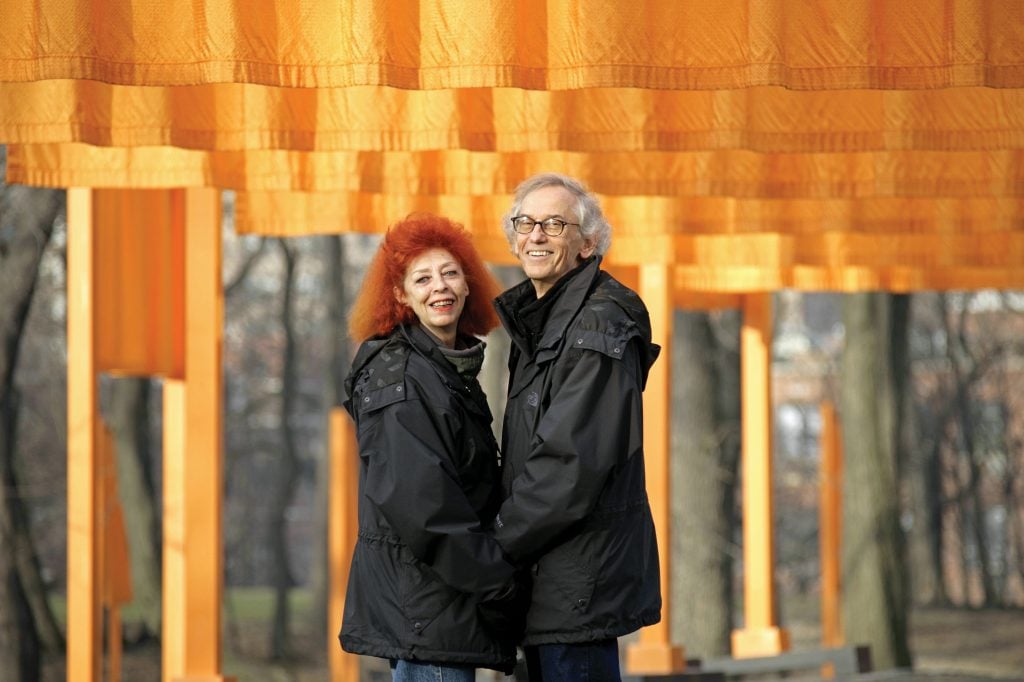
Christo and Jeanne-Claude at The Gates. New York City, February 2005. Photo: Wolfgang Volz. © 2005 Christo and Jeanne-Claude Foundation
Indeed, Jeanne-Claude’s sharp wit was legendary. When asked by New York reporters how much their project, The Gates (1979-2005) would cost to build in Central Park, she answered: “It is very much like bringing up a child. It will cost us whatever it has to cost… Ask your mother if she had any estimates on you.” The room lit up with laughter.
Her positive take was also a constant boost to Christo, who for his part, stayed out of the financial negotiations. His studio, however, was his personal space. “They were inseparable, but they always joked there were three things they did not do together,” said Yavachev. “They never flew on the same airplane; Jeanne-Claude never worked in the studio; and the third is that Christo had never met the accountant.”
The rest, however, was pretty much done in tandem. Below are some examples of projects discussed with their nephew, Yavachev, that the duo completed together in ways that may surprise you.
Wrapped Trees (1997-98)
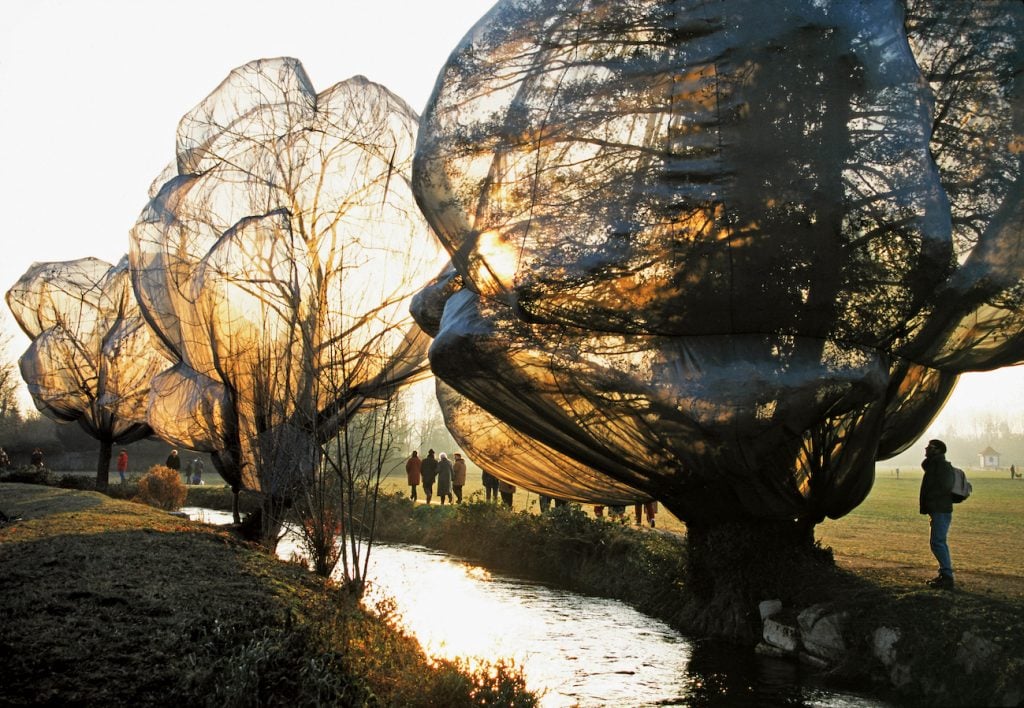
Christo and Jeanne-Claude Wrapped Trees, Fondation Beyeler and Berower Park, Riehen, Switzerland, 1997-98. Photo: Wolfgang Volz ©1998 Christo and Jeanne-Claude Foundation
At the Fondation Beyeler and Brower Park, Riehen, Switzerland, Wrapped Trees was also unusual. Unlike other projects where precise instructions were given in advance to engineers, the directions for how to place the ropes around the trees had to be given in real-time, while the climbers were in the trees, because of the trees’ organic, changing nature.
“Since there were 178 trees, it had to be done very quickly, so both Jeanne-Claude and Christo were directing the climbers,” separately, rather than from the studio, Yavachev said.
Wrapped Fountain and Wrapped Medieval Tower (1968)
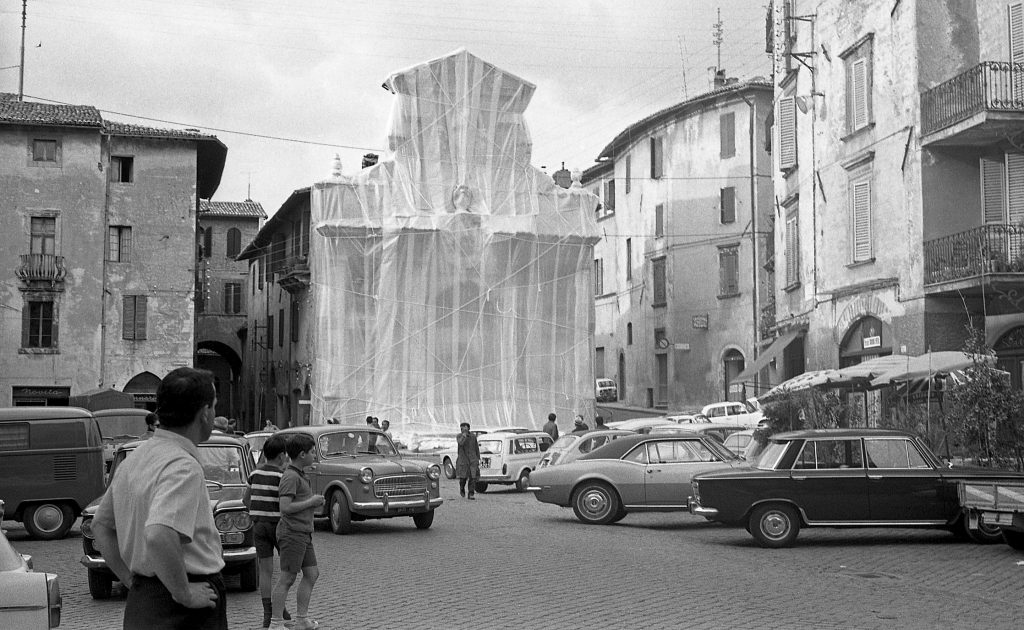
Christo and Jeanne-Claude Wrapped Fountain, Spoleto, Italy, 1968. Photo: Jeanne-Claude ©1968 Christo and Jeanne-Claude Foundation
Some may not know that Christo also never saw this project in Spoleto, Italy, because Jeanne-Claude erected the whole thing on her own, while Christo was working on another project in Bern, Switzerland.
Wrapped Reichstag (1971–95)
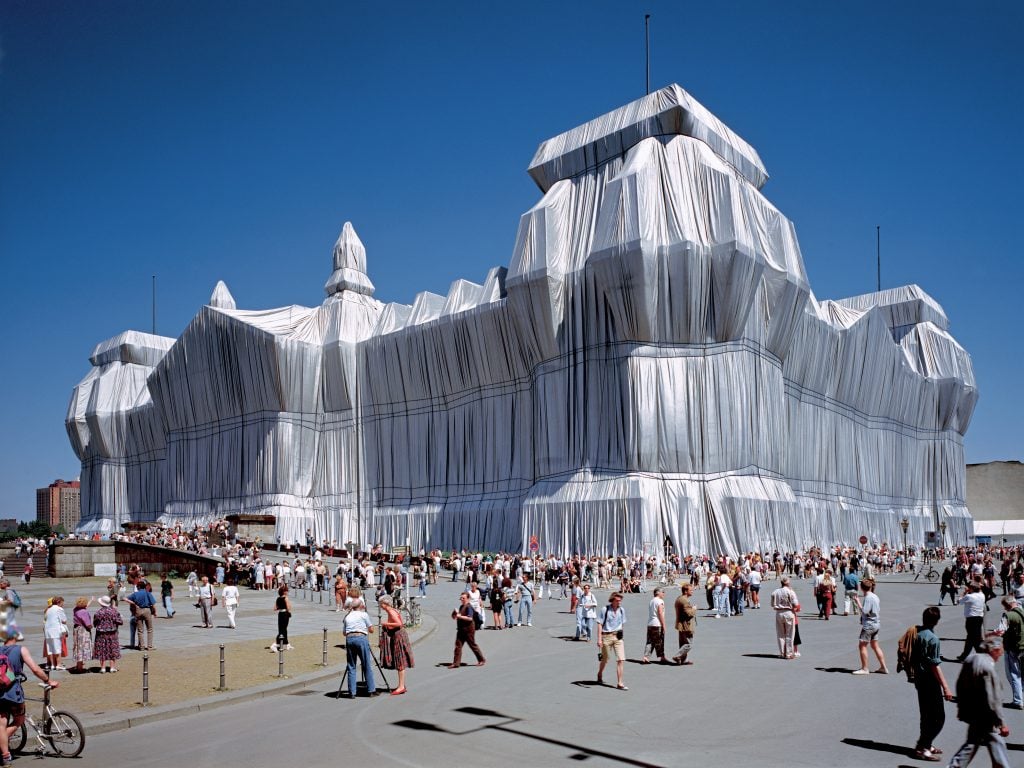
Christo and Jeanne-Claude: Wrapped Reichstag, Berlin 1971-95. Photo: Wolfgang Volz. ©1995 Christo + Wolfgang Volz
This project in Berlin was one of the duo’s most ambitious coups, and the artists used to say it was the only time the existence of an artwork was decided by a parliamentary vote. When they first conceived of the project, the Reichstag was divided between different national military sectors: the Russian, French, British, and American militaries. So permission had to be granted by all four, plus Germany. Luckily, five years after the Berlin Wall fell, they managed to convince the German public and officials to let them wrap the historic building. It also marked the first time the duo signed their names jointly on a project.
The Pont Neuf Wrapped (1975–85)
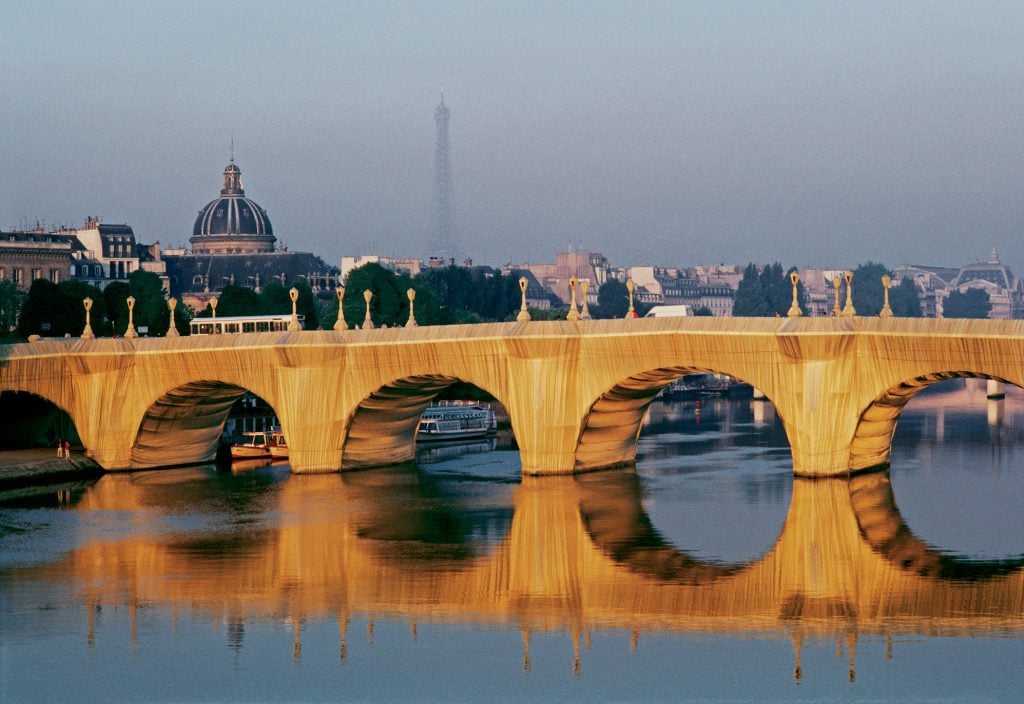
Christo and Jeanne-Claude,The Pont Neuf Wrapped, Paris, 1975-85 Photo: Wolfgang Volz. ©1985 Christo + Wolfgang Volz
This project in Paris is probably one of the most emblematic of the couple. Not only did they meet in Paris, where Jeanne-Claude was from, but the artists used to say it was one of the most difficult projects to get permission to install, for political reasons, bien sur. French President at the time, François Mitterrand, had been in favor of it, but Paris mayor and his political opponent at the time, Jacques Chirac, was told he could not be seen to agree with Mitterrand on anything, even if he had initially shown support. In the end, it was Jeanne-Claude’s negotiating skills and local connections that ultimately convinced Chirac to bridge those differences.





